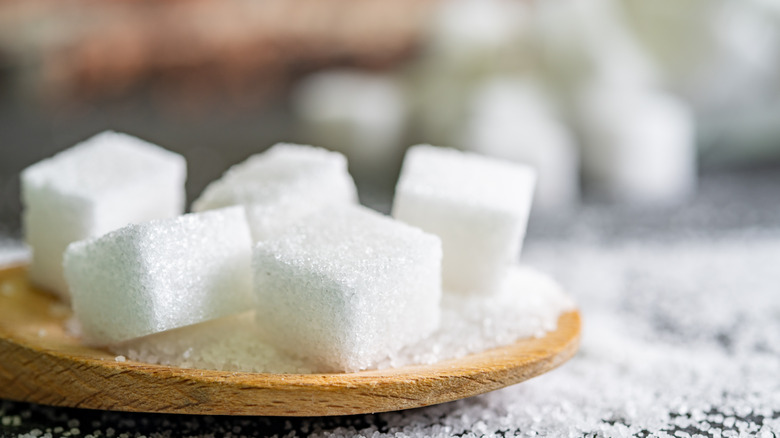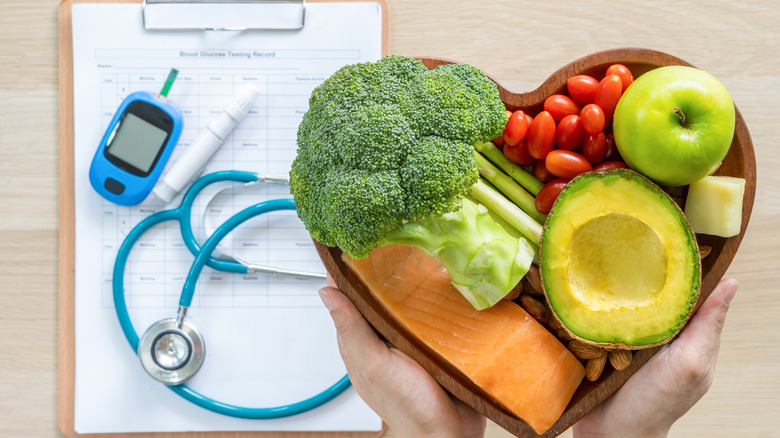This Is How Much Sugar Is Safe To Eat If You Have Prediabetes
Type 2 diabetes, formerly known as adult-onset diabetes, occurs when the body can no longer efficiently process and take in the sugar (or glucose) that enters the bloodstream during the digestion process, as per the Mayo Clinic. This leads to chronic high blood sugar, which can cause an array of multi-system problems if left untreated, namely in the circulatory, immune, and nervous systems of the body.
Prediabetes is the precursor to type 2 diabetes, marked by high blood sugar but not high enough to warrant a diabetes diagnosis, according to the Mayo Clinic. Unfortunately, the multi-system damage found with diabetes can also begin with prediabetes, although to a lesser extent.
If you're prediabetic, you've likely been told to reduce your sugar intake. This is because unhealthy eating patterns often lead to weight gain, which is a huge risk factor for diabetes, according to Chicago Cares. However, sugar isn't the only food that can increase your odds of developing diabetes. UCLA dietitian Dana Hunnes points to the typical American diet, which is "high in processed carbohydrates, fat, animal proteins, and salt, and low in fiber, water, fruits, and vegetables" as the number one predictor of both prediabetes and diabetes. Consuming simple sugars, in particular, causes an immediate spike in overall blood sugar, which is challenging for the body to control in prediabetic individuals. The good news is that you can still eat sugar if you are prediabetic, but there is a safe amount.
Limit your daily sugar consumption
If you have prediabetes, you should limit your sugar intake to no more than 10% of the total amount of calories you consume every day, according to the Centers for Disease Control and Prevention. This means that for the average 2,000-calorie diet, a max of 200 calories should come from added sugar sources. These added sugars can be found in a wide range of products — from snack foods to fruit juices and even condiments and salad dressings — making it crucial to read nutrition labels.
Sugar can also show up on ingredient lists under different names, including high fructose corn syrup, sucrose, and agave nectar. In addition to paying attention to the total number of calories you take in each day from sugar, you should also be mindful of your general carbohydrate intake from both sugar and starches (via Livestrong). Aim for around 135 to 180 grams of carbohydrates per day, depending on your daily caloric needs, to be on the safe side.
Making changes to your diet isn't the only way you can keep that diabetes diagnosis at bay. Chicago Cares outlines some additional ways to keep your weight under control and boost your overall health, starting with exercise. To help lower blood sugar, family physician Zaira Ortega recommends 30 minutes of exercise that gets your heart pumping a minimum of five days per week. A whole-foods, plant-based diet that is rich in fiber is another powerful way to manage, or even reverse, your prediabetes.


